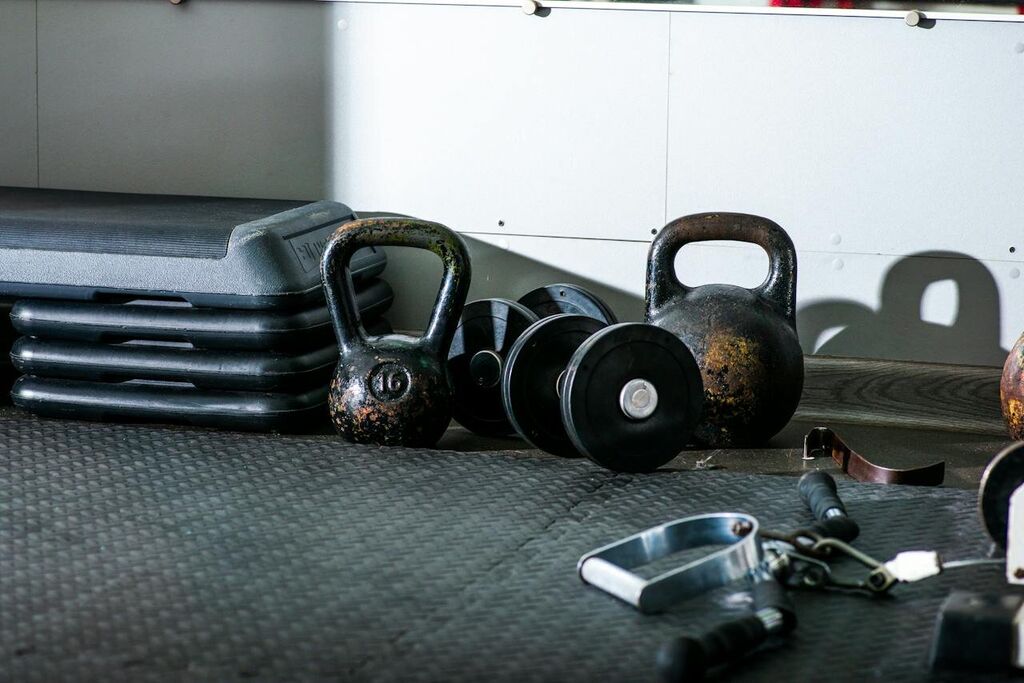
Kettlebells vs. Dumbbells: A Comprehensive Analysis of Fitness Methods
Looking to take your workout to the next level? Whether you’re a beginner or a seasoned fitness enthusiast, understanding the differences between kettlebells and dumbbells can help you make the most of your strength and cardio training.
In this comprehensive analysis, we’ll explore the benefits of each type of equipment for muscle building, weight loss, cardiovascular fitness, overall strength and endurance, and safety for beginners. We’ll also discuss the versatility of both kettlebells and dumbbells for different types of workouts.
Whether you’re aiming to build muscle, shed pounds, or improve your overall fitness, this article will help you make an informed decision about which fitness method is best for you.
Kettlebells vs. Dumbbells: What’s the Difference?
When comparing kettlebells and dumbbells, it’s essential to understand the nuanced differences in their design, movement techniques, and overall impact on fitness and strength training.
Kettlebells, with their unique off-centered weight distribution, provide a different challenge to the muscles, engaging stabilizer muscles and promoting functional strength.
On the other hand, dumbbells offer more controlled and isolated movements, allowing for precise targeting of specific muscle groups. Kettlebells are advantageous for dynamic exercises like kettlebell swings and Turkish get-ups, which work the entire body, while dumbbells excel in exercises like bicep curls and shoulder presses, targeting specific muscle groups with greater isolation.
Which One is Better for Muscle Building?
When considering muscle building, the choice between kettlebells and dumbbells depends on various factors, including the targeted muscle groups, workout techniques, and the specific benefits offered by each type of equipment.
Kettlebells are particularly effective for dynamic, full-body movements that engage multiple muscle groups simultaneously, contributing to improved functional strength and cardiovascular endurance.
On the other hand, dumbbells offer more stability during isolated exercises, allowing for precise targeting of specific muscles and facilitating unilateral training to address strength imbalances. Both kettlebells and dumbbells provide a wide range of exercise variations, enabling individuals to customize their routines for optimal muscle development and overall fitness. Their versatility and impact on muscle growth make them indispensable tools in any well-rounded strength training program.
What Muscle Groups Do Kettlebells Target?
Kettlebell exercises effectively target a wide range of muscle groups, including the core, arms, legs, back, shoulders, and more, through dynamic movements that engage multiple joints and muscles simultaneously.
Kettlebell exercises are highly effective for strengthening the core muscles. This is because the dynamic movements involved require stability and control from the abdominal and lower back muscles.
In addition, the swinging and lifting actions of kettlebell exercises engage the arms, shoulders, and back, resulting in improved strength and flexibility in these areas. The leg muscles, including the quadriceps, hamstrings, and glutes, are also heavily recruited during exercises such as kettlebell squats and lunges, leading to enhanced lower body strength and stability.
What Muscle Groups Do Dumbbells Target?
Dumbbell workouts are designed to target various muscle groups, such as the biceps, triceps, chest, shoulders, and more, offering versatile exercise variations that cater to different strength training needs.
Engage your biceps with exercises like bicep curls and hammer curls to strengthen and sculpt your arms.
Target your triceps with tricep kickbacks and overhead tricep extensions for effective muscle work.
Work your chest muscles with exercises such as chest press and flyes for upper body strength and definition.
Incorporate shoulder presses and lateral raises to effectively target the deltoid muscles, improving shoulder strength and stability.
Which One is Better for Weight Loss?
When it comes to weight loss, the choice between kettlebells and dumbbells can significantly impact calorie burn, metabolic rate, and body composition, influencing the effectiveness of the workout routine.
Kettlebell workouts are known for their ability to engage multiple muscle groups simultaneously. This leads to a higher calorie expenditure and an increased metabolic rate.
On the other hand, dumbbell exercises offer precise targeting of specific muscle groups. This promotes muscle strength and endurance.
Both types of workouts contribute to improving body composition by reducing fat mass and increasing lean muscle mass. This is essential for enhancing overall metabolic efficiency.
Is Kettlebell Training More Effective for Burning Calories?
Kettlebell training is known for its exceptional ability to elevate cardiovascular endurance, promote calorie burn, and boost the metabolic rate, making it a compelling choice for individuals seeking effective weight loss solutions.
The dynamic movements involved in kettlebell exercises engage multiple muscle groups, leading to improved overall physical conditioning.
This form of training can significantly enhance cardiovascular health by increasing heart rate and oxygen consumption.
The high-intensity nature of kettlebell workouts stimulates the body’s metabolism, allowing for efficient calorie burning during and after the exercise session, which is beneficial for weight management.
Incorporating kettlebell training into a fitness regimen can yield substantial cardiovascular and metabolic benefits, supporting overall health and weight loss goals.
Is Dumbbell Training More Effective for Building Muscle?
Dumbbell training offers valuable advantages for muscle building, metabolic rate elevation, and endurance enhancement, contributing to its effectiveness in supporting weight loss goals along with strength gains.
Incorporating dumbbell exercises into a workout routine is widely recognized as a way to improve muscle definition and overall strength. Dumbbells offer versatility for targeted muscle isolation and full-body movements, promoting balanced muscle development.
Regular dumbbell training can also increase metabolic rate, leading to more efficient calorie burning throughout the day and potentially aiding in weight management. Additionally, consistent dumbbell workouts can improve endurance and stamina, positively impacting athletic performance and daily functional activities. As such, dumbbell training is a valuable component of a well-rounded fitness regimen.
Which One is Better for Cardiovascular Fitness?
The choice between kettlebells and dumbbells significantly influences cardiovascular fitness, endurance, flexibility, and stability, directly impacting the effectiveness of the workout routines for individuals seeking to enhance their overall physical well-being.
Kettlebells and dumbbells are versatile workout tools that offer unique benefits for improving heart health, building stamina, increasing range of motion, and enhancing core strength.
Kettlebell exercises, such as swings and squats, engage multiple muscle groups simultaneously, promoting cardiovascular endurance and overall conditioning. On the other hand, dumbbells are excellent for targeted muscle isolation and can be utilized for a wide range of exercises to boost strength, stability, and flexibility in various muscle groups.
What Types of Cardio Exercises Can Be Done with Kettlebells?
Kettlebells offer a diverse range of cardiovascular exercises that promote endurance, flexibility, and stability. These exercises incorporate dynamic movements that challenge the body and enhance overall physical conditioning.
Kettlebell exercises, such as swings, snatches, cleans, and jerks, engage multiple muscle groups and elevate the heart rate. This makes them effective for improving cardiovascular health.
The fluid motions and weight resistance of these exercises also enhance flexibility and stability. They do this by challenging the body to adapt to different ranges of motion and balance demands.
This comprehensive approach not only improves physical endurance, but also develops total body strength. This makes kettlebell workouts a versatile option for those seeking a well-rounded exercise regimen.
What Types of Cardio Exercises Can Be Done with Dumbbells?
Dumbbell workouts encompass a variety of cardio exercises that contribute to cardiovascular fitness, endurance, flexibility, and stability, offering effective options for individuals seeking comprehensive physical conditioning.
Incorporating dumbbell exercises such as squats, lunges, and step-ups into your workout routine can elevate heart rate and engage major muscle groups, improving cardiovascular endurance.
Additionally, incorporating dynamic movements like swings, thrusters, and snatches with dumbbells can not only benefit heart health, but also enhance overall strength and stability.
The versatility of dumbbells allows for seamless integration of these exercises, promoting agility, coordination, and functional fitness while providing a well-rounded approach to physical conditioning.
Which One is Better for Overall Strength and Endurance?
When evaluating overall strength and endurance, the choice between kettlebells and dumbbells influences the effectiveness and performance of strength training routines, targeting various muscle groups to enhance physical resilience and functional fitness.
The impact of kettlebells and dumbbells on muscle engagement differs. Kettlebells engage stabilizing muscles due to their off-center weight distribution, while dumbbells provide more controlled and isolated movements.
Kettlebell workouts involve dynamic movements that improve core strength and power, while dumbbells allow for precise muscle targeting and gradual strength progression. Both equipment options effectively enhance overall strength and endurance, leading to improved athletic performance and functional capacity in daily activities.
What Are the Advantages of Using Kettlebells for Strength Training?
Kettlebells offer distinct advantages for strength training, including their effectiveness, versatility in exercises, and the engagement of multiple muscle groups and joints to promote overall functional fitness and resilience.
Kettlebells are equipped with dynamic weights that are perfect for incorporating ballistic movements, such as swings and snatches. These movements provide a full-body workout and enhance power and coordination.
The off-center design of kettlebells also activates stabilizing muscles, contributing to improved balance and core strength. Their compact size makes them convenient for home workouts or while traveling, allowing individuals to maintain their strength training regimen with minimal equipment.
With kettlebells, individuals can experience a comprehensive and efficient workout that targets various muscle groups and fosters functional strength and performance.
What Are the Advantages of Using Dumbbells for Strength Training?
Dumbbells provide unique advantages for strength training, offering versatility in exercises, targeted engagement of various muscle groups, and the enhancement of overall physical performance for individuals seeking functional fitness and resilience.
The compact design and adjustable weight options of dumbbells make them convenient for home workouts or on-the-go training.
Incorporating dumbbells into routines effectively engages specific muscle groups, promoting balanced strength development and reducing the risk of imbalances or injuries.
Using dumbbells also enhances stability, coordination, and core strength, resulting in improved overall physical performance and functional movement patterns.
Which One is Safer for Beginners?
For beginners, the safety considerations of using kettlebells and dumbbells revolve around injury prevention, proper form, posture, and technique, ensuring a secure and effective introduction to strength training and fitness routines.
For beginners, it’s crucial to prioritize learning the correct techniques to prevent strain or injury. This involves focusing on maintaining proper posture and form, which helps distribute weight effectively and reduces the risk of strains.
Additionally, gradual progression in weight and intensity is essential for building strength and avoiding overexertion. Seeking guidance from a certified trainer or instructor can provide invaluable insight into personalized routines and ensure a safe transition into using kettlebells and dumbbells for fitness.
Which One is More Versatile for Different Workouts?
The versatility of kettlebells and dumbbells in accommodating various workouts, exercises, and their diverse variations makes them essential components of comprehensive fitness routines tailored to individual preferences and goals.
The adaptable nature of kettlebells and dumbbells allows for a wide range of movements, making them suitable for traditional strength training as well as dynamic functional exercises. This ensures a full-body workout that targets multiple muscle groups.
Individuals can customize their workouts by incorporating exercises such as kettlebell swings, snatches, dumbbell lunges, presses, or curls. This helps improve strength, endurance, and overall fitness. Additionally, the portability of these equipment makes them convenient for home workouts, outdoor training, or travel, providing an accessible means to maintain consistent exercise regimens.




No Comments